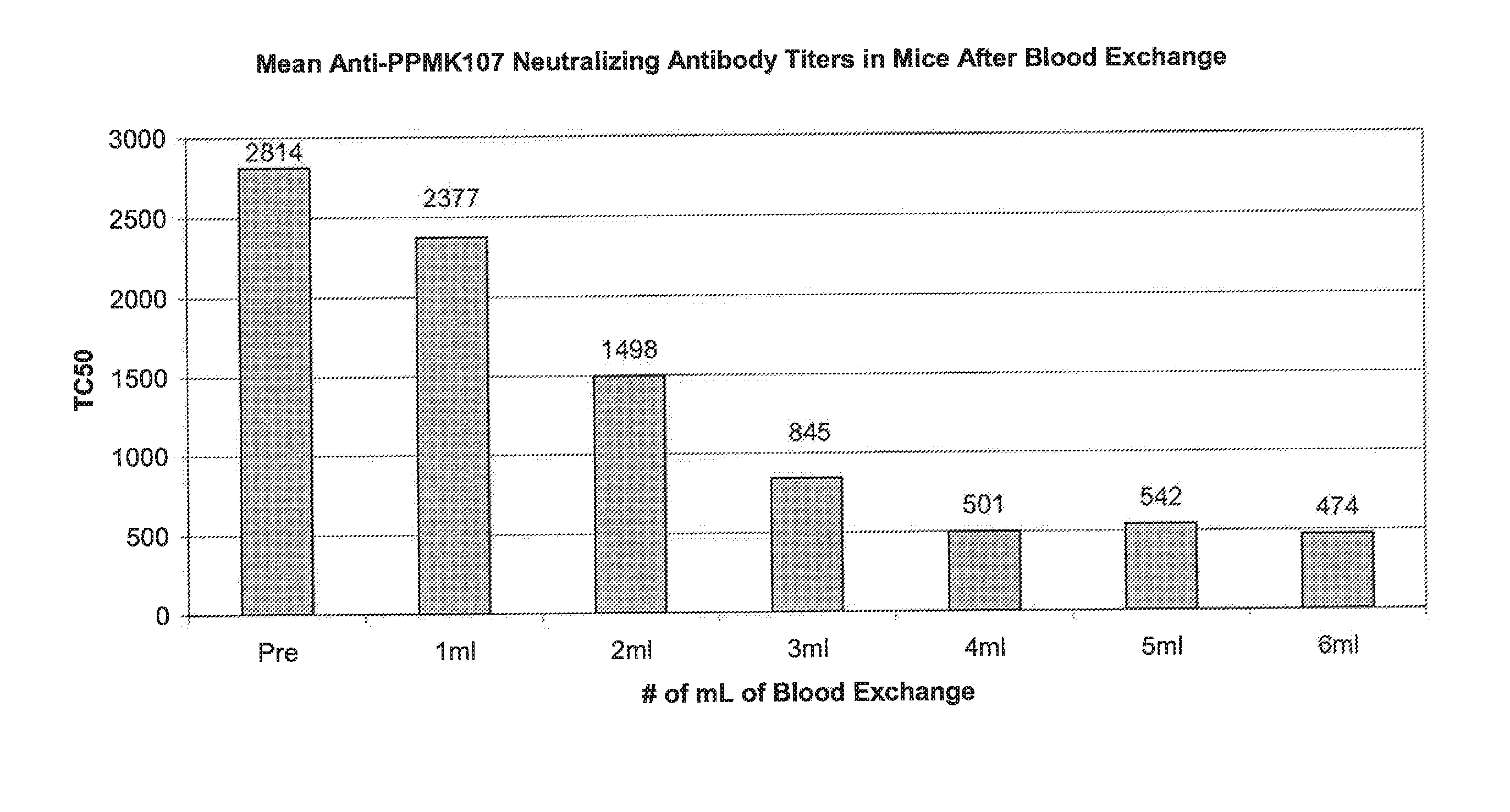Immunogenic agent therapy using plasmapheresis
a technology of immunomodulatory agent and plasmapheresis, which is applied in the direction of antibody medical ingredients, drug compositions, immunological disorders, etc., can solve the problems of ineffective use of cobra venom, inability to achieve practical solutions, and high cost and cumbersome methods, so as to reduce the immune response and reduce the level of antibody or complement
- Summary
- Abstract
- Description
- Claims
- Application Information
AI Technical Summary
Benefits of technology
Problems solved by technology
Method used
Image
Examples
example 1
[0020] A cancer patient receives three courses of an attenuated Newcastle disease virus. Each of these three first courses consist of six total treatments given at three times per week for two weeks followed by a one week rest period. For each course, a first dose of 1 billion PFU / m2 is given followed by a second dose of 12 billion PFU / m2 and four doses of 24 to 120 billion PFU / m2. Before the patient's fourth course, at a time for which the patient has developed antibodies to virus, the patient undergoes plasmapheresis using filtration or centrifugation. Within one hour of completing the plasmapheresis, the patient is treated with a dose of 1 to 12 billion PFU / m2. Within the following week, the patient receives two more doses ranging from 12 to 120 billion PFU / m2.
example 2
[0021] A cancer patient receives three courses of an attenuated Newcastle disease virus. Each of these three first courses consist of six total treatments given at three times per week for two weeks followed by a one week rest period. For each course, a first dose of 24 billion PFU / m2 administered over 3 hours is given followed by a five doses of 120 billion PFU / m2. Before the patient's fourth course, at a time for which the patient will have developed antibodies to virus, the patient undergoes plasmapheresis using filtration or centrifugation. Within one hour of completing the plasmapheresis, the patient is treated with a dose ranging from 24 to 120 billion PFU / m2 administered over 3 hours. Within the following week, the patient receives two more doses of 120 billion PFU / m2
example 3
[0022] Exchange Transfusion of Pre-Immunized Mice Reduces the Levels of Neutralizing Antibodies to Newcastle Disease Virus PPMK107 in Serum.
Immunization.
[0023] Female C3H / Hen mice were given intravenous doses of 1E+09 PFU of PPMK107 (an attenuated Newcastle disease virus described in WO 00 / 62735) weekly for at least 4 weeks to generate neutralizing antibodies in the serum against PPMK107 and were therefore pre-immunized to PPMK107
Catheter Implantation:
[0024] Mice were anesthetized with ketamine / xylazine and their surgical site shaved (neck and thoracic region; back of neck). Implantation of the catheter was performed by accessing the carotid artery with polyethylene tubing inserted into the lumen of the artery and attached with three silk ligatures to keep the tube in place. After successful implantation of the catheter, it was exteriorized between the scapulae. Before being capped, the catheter was filled with a solution of heparin. The mouse was given 3 days or more to recov...
PUM
| Property | Measurement | Unit |
|---|---|---|
| size | aaaaa | aaaaa |
| molecular weight | aaaaa | aaaaa |
| volumes | aaaaa | aaaaa |
Abstract
Description
Claims
Application Information
 Login to View More
Login to View More - R&D
- Intellectual Property
- Life Sciences
- Materials
- Tech Scout
- Unparalleled Data Quality
- Higher Quality Content
- 60% Fewer Hallucinations
Browse by: Latest US Patents, China's latest patents, Technical Efficacy Thesaurus, Application Domain, Technology Topic, Popular Technical Reports.
© 2025 PatSnap. All rights reserved.Legal|Privacy policy|Modern Slavery Act Transparency Statement|Sitemap|About US| Contact US: help@patsnap.com


